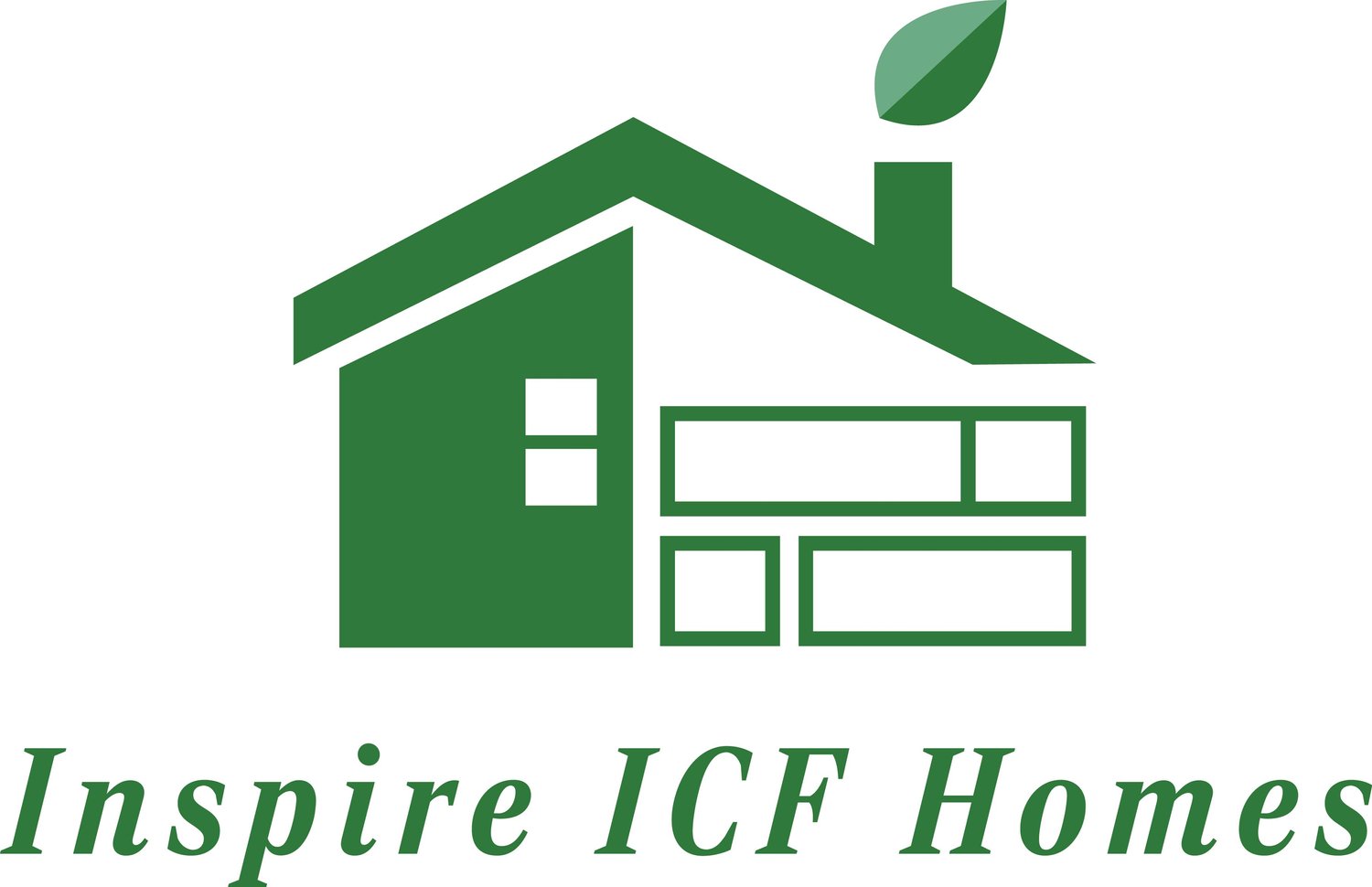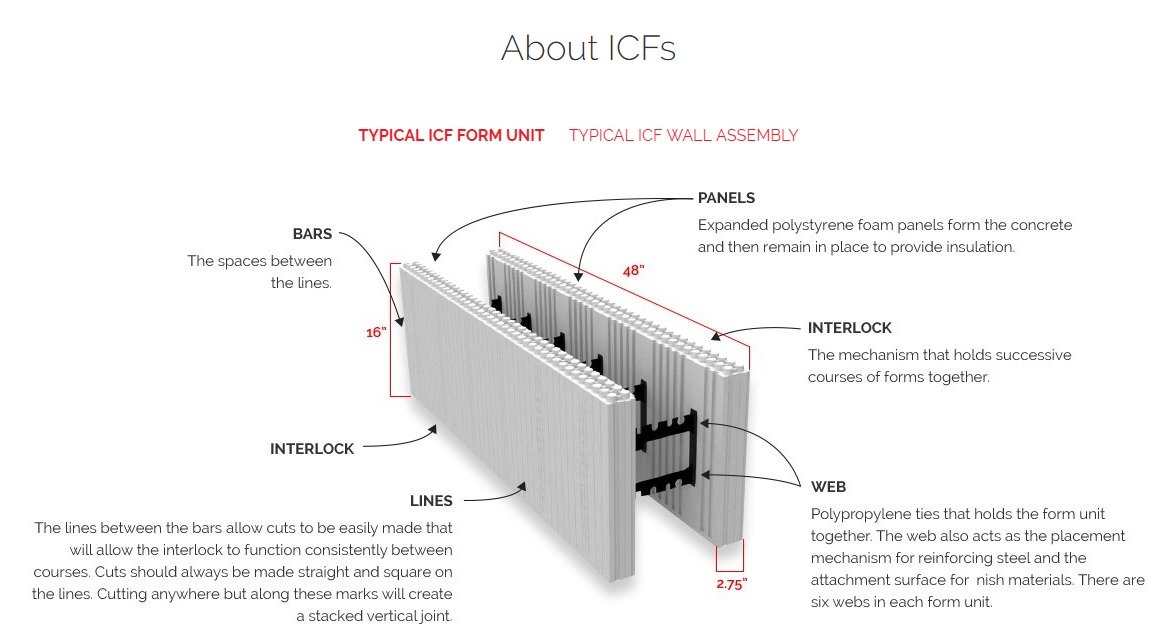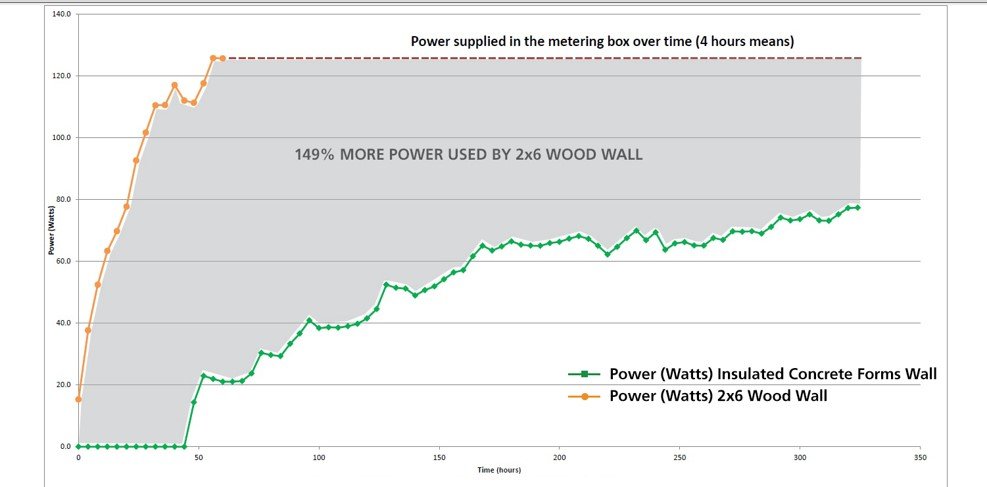Why Insulated Concrete Forms (ICFs)?
High performance ICF homes offer a host of benefits, such as lower energy bills, faster construction times, decreased maintenance and quieter interiors. The primary reasons behind their growing popularity is their remarkable energy efficiency, strength, safety and comfort.
Whether you are building your forever family home, retirement home, investment complex or commercial building - there is reason to think ICF. Reduced maintenance, lower monthly costs, reliability & strong resale value are a few items to note. ICF construction completes multiple steps of your project all in one single stage for a superior structure. Not only does this save time & labour, it reduces costs & delay on separate materials & delivery.
Let’s first ask, what is ICF?
What is ICF? Insulated Concrete Form (ICF) is a system of expanded polystyrene (EPS) rigid insulation blocks separated by plastic webbing. It is used as an integrated concrete form to pour a concrete wall instead of a traditional wood plank or plywood form. These foam blocks get put together like “lego” and then reinforced with rebar & filled with concrete. This completes 4 steps in one - foundation, framing, insulation & vapour barrier. Efficiency
One of the big advantages of ICFs for homeowners is energy efficiency. A recent groundbreaking study found that ICF walls had 60% less energy loss.
This is due to the “ICF Effect”:
The continuous foam panels in ICFs provided an R-value of R-25 and above.
The thermal mass of the concrete core in the wall.
The airtight ICF building envelope.
Comfort
EPS foam, is what ICFs are made from, this is one of the best insulating materials yet. Imagine a disposable foam cup, where 1/8 inch of EPS foam is all it takes to comfortably separate your hand from a scalding hot drink. ICF typically have five to six inches of continuous EPS insulation with tested insulation value of R-22 or R-26. Some ICF manufacturers offer thicker foams, with values of R-32 or even R-40. With wood frame construction, the average frame wall is about 25% wood, so even though the fiberglass or cellulose insulation may be rated at R-20 (for 2×6), the “whole wall” insulation value is significantly less. Finally, with ICF, the owner is assured of continuous insulation without gaps or install error with insulation or vapour barrier. This allows for a future monthly savings of up to 50% on your utility costs!! Less strain on your mechanical equipment & less energy used, makes for a longer service life.
ICF construction generally cuts energy costs in about half. If additional steps are taken, such as adequate attic insulation, quality windows and doors, properly-sized high-efficiency HVAC system, the savings could be even greater!
Safety
ICF homes offer a level of safety no other building system can match. They are more than 10 times stronger than framed structures, and several times stronger than conventional foundations. It’s a result of having exterior walls with a core of solid, steel-reinforced concrete. Having a superior fire rating of up to 3-4 hours, wind resistance of up 250 mph & walls/structure that will not rot or contain mold. Home Insurance discounts may be recognized by your provider adding another additional long term savings.
Sound Absorption
It’s no surprise that energy efficiency and disaster resistance are top of mind for ICF home owners. But benefits numbers three and four are comfort and quiet. Most ICFs with a six-inch concrete core have STC ratings of 50 to 55, which means only about one-quarter to one-eighth as much sound penetrates an ICF wall when compared to wood frame homes!
Costs
The cost of living in an ICF home is no higher—and may be cheaper long term when compared to living in a standard or older home. With careful planning and considering the utility savings, the monthly expense of living in an ICF house can actually be less expensive. The initial ICF home building cost will typically be more at the early stages of construction, BUT savings can be realized further into the building process with savings on mechanical, exterior finishes, time & labour. The long term benefit can provide much much lower monthly costs.





